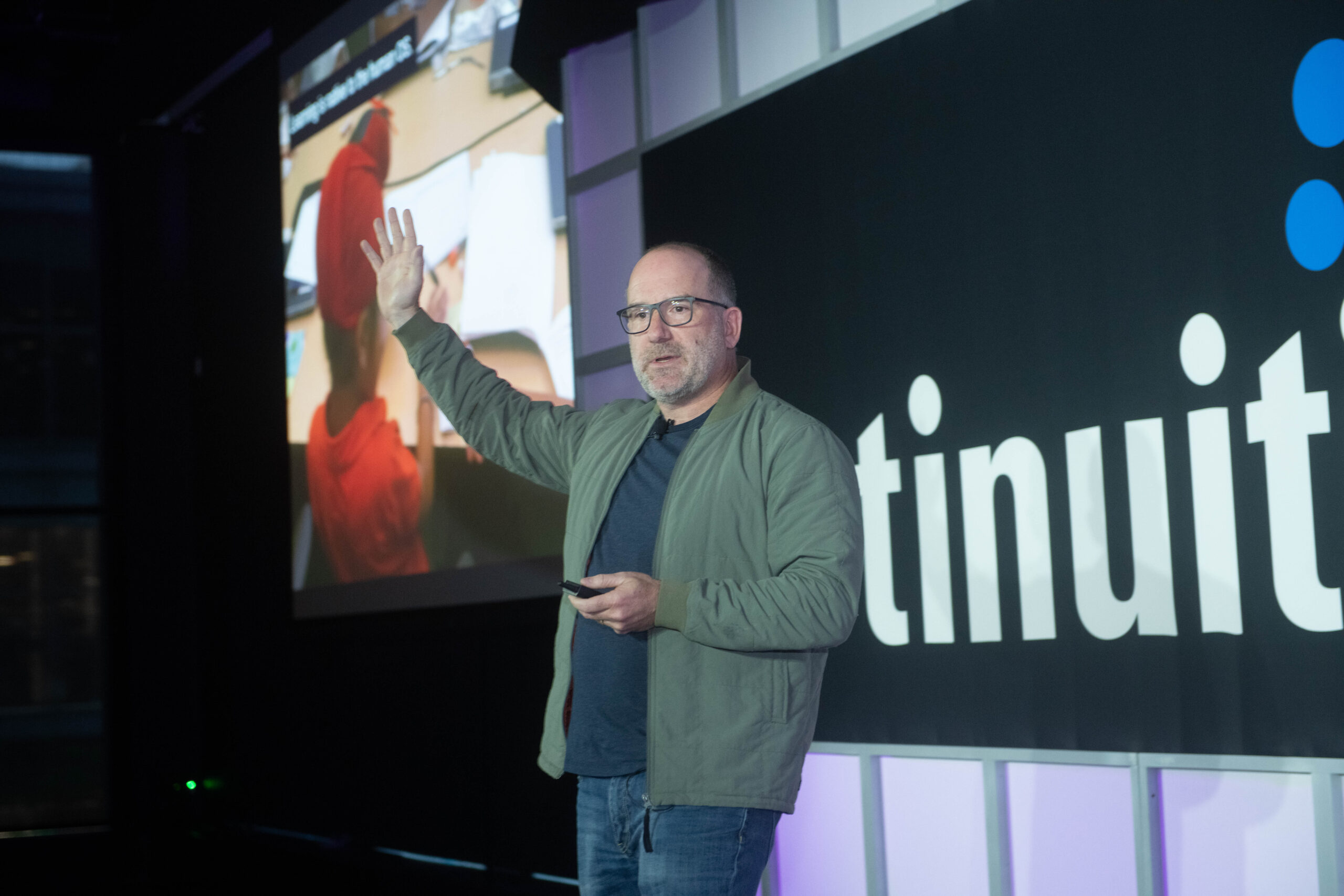Digital Growth Summit 2019: 9 Big Things We Learned This Year


On May 16th the industry’s top brand marketing leaders, digital strategists, and platform partners gathered at the Digital Growth Summit for an exclusive day of learning real strategies, sharing stories, and networking with friends and new partners.
This year’s event was our biggest ever; over 300 attendees spanning 75+ brands and marketing companies gathered at the beautiful conference space in One Liberty Plaza in New York, right nearby the World Trade Center.
The speakers touched on many topics and strategies on everything marketing, but it’s safe to say that the theme this year was all about getting back to the basics — focusing on the customer and merging data science with art to create a more human experience that wins over audiences.
Here’s a quick look at some of the event highlights and actionable takeaways that can be applied to drive meaningful growth in 2019 and beyond.
After a hot breakfast and ample time for meeting and greeting one another in the main hall, Dalton Dorné, CMO of Tinuiti, kicked things off with the day’s agenda, introducing the many exciting speakers we’d hear throughout the day.
Dorné was then joined on-stage by Zach Morrison, CEO of Tinuiti, for a brief foray into the state of marketing today and the story of Elite SEM’s rapid growth and track record of client successes. This is the moment when the curtains dropped behind Dorné and Morrison, revealing the day’s big surprise announcement: Elite SEM and its acquisitions were now consolidated into a new brand — Tinuiti!

“From the earliest days of Elite to today now as Tinuiti, our driving force is to build an agency that’s smarter, more nimble and innovative than the competition – with a ‘people first’ ethos as our foundation.”
– Zach Morrison, CEO of Tinuiti (formerly Elite SEM)
“Now, with the deep subject-matter expertise of our team, the strength of our proprietary data science platform, and the singularity of our intrapreneurial business model, we’re united and prepared to lead the industry with a new service model that will deliver outstanding results for fast-growth brands and enterprise clients.”
After explaining the mission and vision behind Tinuiti and the rebrand, Morrison was quick to return the focus to what everyone came for: the amazing speakers and learning sessions at this year’s Growth Summit.
Want to learn more about our rebrand? Check out Introducing Tinuiti – Elite SEM Rebranding Ushers In New Era of Growth.
Why are customers drawn to direct-to-consumer brands?
Over 40% of online shoppers have purchased from a D2C in the last month, cited Brigitte Majewski, VP Research Director at Forrester.
The answer is that as we’ve entered “the age of the customer,” these brands are the first to pivot and provide three essential needs of today’s consumers:

However, just as these brands have won over customers with their relentless focus on customer centricity — they also risk losing these same consumers in the name of customer obsession.
That’s because, with today’s powerful data collection and targeting tools, customer obsession can often feel like an unwanted intrusion to today’s privacy-focused customers.
“In our pursuit of customer centricity, we’ve almost gotten too close [to some customers]. Tread carefully, and don’t treat your customers and prospects the same way. Always ask for permission. Don’t overstep or you can risk becoming creepy.”
– Brigitte Majewski, VP, Research Director serving B2C Marketing Professionals at Forrester Research
Majewski challenges marketers and brands to rethink their assumptions of customer centricity and modify their approach to “get on the right side of customers.”
Some of Majewski’s major takeaways include:
In a time where marketers have unparalleled capabilities to collect data and be present in the lives of consumers, it’s important to recognize that “just because we could doesn’t mean we always should,” explained Majewski.
That’s why it’s important to employ a thoughtful and empathetic foundation when using today’s powerful advertising capabilities.

Many brands today focus so much attention on ROAS and instant gratification metrics that they often forget about the importance of finding new customers.
How do you find the perfect mix between short-term sales metrics and long-term investment in acquiring a larger audience?
“Many businesses today are like an unbalanced, lopsided bodybuilder. They go big on short-term wins, forgetting that long-term success really depends on a broad approach to driving demand winning larger audiences.”
-Craig Atkinson, Chief Client Officer at Tinuiti
“When you only focus on reaping and not sowing, you get a dustbowl,” warned Atkinson.
While going narrow and niche is a core tenet of many D2C brands when it comes to customer acquisition, that leaves us with a “narrow targeting aperture.”

That’s why it’s important that many brands today should challenge themselves to broaden their performance marketing approach by targeting a larger market. And while doing so, it’s important to build and retain that sense of awe and connection, said Atkinson.
Case in point: Tommy Bahama. An island lifestyle brand that goes far beyond the beaches to win customers all across the United States.
“How do you build an inclusive island lifestyle brand that anyone can take part in? Through an experiential and emotional experience. Not everyone may live on an island, but everyone can appreciate leisurely and relaxed apparel. We built a $700m brand on building that connection.”
-Andy Comer, Senior VP, Marketing and Creative Services at Tommy Bahama
Speaking to Majewski’s earlier points on the risks of hypertargeting; “it [hypertargeting] can backfire. It’s contrary to the Tommy Bahama ethos; relaxing, unplugging, and being an authentic version of yourself,” said Comer.
When it comes to marketing efforts, it’s important to blend all of your data available together to make educated decisions that fit your brand ethos and audience expectations, not just decisions based on mass amounts of data.
“The data we get from Tinuiti, plus industry experts and our raw sales data are all used together. It’s a bit of science meets art,” explains Comer.

When it comes to advertising platforms and tools, Google has much to offer for brands and marketers — especially when you consider how automation and machine learning can be applied to optimize your entire marketing funnel, according to Samir Janveja, Group Lead of Agency Partnerships at Google.

Automated, or Smart advertising, can be leveraged to reach many of your marketing initiatives, including:
Janveja shared examples of clients that have achieved major success using Google’s growing suite of automated tools; Big 5 Sporting Goods increasing campaign ROAS by 13% and holiday store traffic by 25%.
Janveja’s five rules for making the most of Google’s automated marketing include optimizing toward:
Many brands and marketers are only beginning to test their machine learning potential. Having the right tools isn’t simply enough, it’s also knowing how to use them that is critical to making the most of automation to create more efficient results.
It’s no secret that Amazon’s Marketplace has become a growth vehicle for many of today’s D2C brands, but Amazon’s advertising services can also deliver incredible impact for brands that sell elsewhere off of Amazon as well.
That’s because it’s more than likely that your consumers are shopping on Amazon, even if your products aren’t on the Marketplace.
“You need to meet your consumer on Amazon — even if your products aren’t there. If you don’t own your branded space on Amazon, someone else will.”
-Nancy McLaughlin, Senior Manager, Marketplace Channels at Tinuiti
For brands that are already selling on Amazon, there is a recipe for successful brand building — and it revolves around three main tiers.
While many business owners today think of success in terms of sales and marketing, the importance of having a solid operational foundation cannot be overlooked, explains McLaughlin. “Good operational health means you have above an 85% fast track rate and below a 1% chargeback rate.”
With solid demand forecasting and inventory fulfillment in place, brands can then look to building their awareness and branding using Amazon’s creative content offering — which includes EBC, A+, and Stores.
Jack Black’s rich visual experience is the perfect example of a brand that has built consistent branding across its ecommerce website, social channels, and Amazon Store.

This content enables your brand to not only build a more visual experience but also to tell your story and build equity with your customers. With compelling content on your product and store pages on Amazon, your content is now optimized for conversions and ready to receive traffic.
“Amazon advertising now enables you to connect your consumer in many different ways, both on and off of Amazon,” said McLaughlin.
What’s great about using Amazon is that they have first-party data on your customers, even if your customers have to buy your products elsewhere off of the Marketplace.
Case in point: Peloton.
Peloton, a home workout bike company that has seen wild success in the last few years, uses Amazon DSP to reach their customers while they’re visiting Amazon’s display network. These display ads have tailored media that is highly relevant to the consumer based on Amazon’s audience insights — allowing Peloton to laser in on people interested in fitness and exercise.

“Amazon has loads of first-hand consumer data that can be used across the entire purchase funnel, to reach your customers whether they’re on Amazon, Forbes, or elsewhere.”
The average human being is only capable of maintaining no more than 16 relationships, only 8 of which can be considered good friends, according to psychology research cited by Steve Wietrecki, Chief Revenue Officer at Klaviyo.
Relationship building is the core of our personal — and professional — lives. But our limited capacity to maintain relationships can cost us big when it comes to business.
Which is why today it’s so important to find the right tech stack that allows you to build and scale your relationships with customers in a thoughtful way, said Wietrecki.
“GDPR, CCPA, and changing privacy behaviors have made it all the more clear how important it is to scale consent-based relationships using first-party customer data. This tech should allow you to ask more clarifying questions to identify and close gaps so that you’re creating the most relevant relationships possible — at scale.”
-Steve Wietrecki, Chief Revenue Officer at Klaviyo.
Imagine a customer shopping for pet supplies. A smart brand will ask questions to discover what type of dog that person is shopping for. Is it a small dog? A large dog?
Wietrecki explains that this information is critical so that the brand can then optimize the imagery of the email opt-in overlay to better fit the customer’s needs. Small optimizations based on customer input can allow you to make the experience congruent for all of your customers to drive results at scale.
“Once you have a process in place for learning about your customer’s to create a better digital experience, you can then scale that experience to new audiences,” said Wietrecki.

“Start building the relationship process with the new audience, get permission, get welcomed in, and they will stay longer and tell their friends to do the same.”
The best part, Wietrecki said, is that with today’s tech stack, marketers don’t need a computer science degree. There are tools today that “allow you to take your great ideas about your audiences and develop them in hours and test them that same day — not weeks or months later.”
Chubbies’ brand DNA champions a message of unabashed self-expression, setting itself uniquely apart from today’s more traditional men’s fashion labels. When it launched in 2011, the founding team likely never imagined how their brand’s dedication to whimsy and fun would translate into a fiercely loyal customer base worth millions in revenue.
Kevin Page, Senior Manager of Media Strategy & Measurement at Chubbies, gave us a visual history of the brand’s content development that included hilarious off-the-cusp social media videos shot in the Chubbies office space.

We learned of the brand’s non-traditional attempts at customer acquisition through content and storytelling and how they grew those initiatives into more scalable efforts that continue to honor the brand identity.
“Chubbies started out by building on that emotional connection to that fun throwback moment — short shorts. Our content marketing built on that nostalgia and engaged in community building on social platforms like Snapchat, Facebook & Instagram.”
-Kevin Page, Senior Manager of Media Strategy & Measurement at Chubbies
There’s much to learn from the Chubbies innovative use of team members to create funny, viral video content that resonated with their target audience on social platforms.
Some of Page’s big takeaways for Chubbies’ growth success:
What can performance advertisers across industries learn from D2C brands?
The wave of successful direct-to-consumer startups have generated an incredible amount of investment, mergers & acquisitions, and trends in nearly every industry said Terry Kawaja Founder & CEO at Luma Partners.
From razors to shoes to mattresses and on-demand services, the industry as a whole has generated over $20B in capital funding and yet “is still in its nascency” said Kawaja.
“Not all brands will make it, but it’s important to take notice of what is happening within the sector. Traditional marketers need to pay attention and figure out what aspects of D2C they can incorporate into their strategy.”
-Terry Kawaja, Founder & CEO at Luma Partners
The direct to consumer playbook continues to disrupt and brand marketers that embrace the DNA that makes these companies successful are poised for huge growth — in terms of revenue, management, and culture.
To cap off the many success stories we heard throughout the day was Luca+Danni, a fast-growing D2C jewelry brand that has seen enormous customer and sales growth both on its ecommerce website and on Amazon.
Finding success as a jewelry brand wasn’t always easy, explains David Oksman, President at Luca + Danni. The online jewelry market is incredibly competitive, so finding your target audience and niche value proposition is critical.
Oksman explains that his brand was able to do so by “hacking into culture” to better cultivate their brand and connect with customers.
“Dig into the customer journey, what makes your brand special, differentiate it, create value, and good things will happen.”
-David Oksman, President at Luca + Danni
Oksman found that outside of acquiring new customers, the brand has seen much of its growth by increasing AOV and repeat purchasers.
“You should look at your existing framework — everything from product promotions to social engagement, to identify ways to increase your performance from existing customers,” said Oksman.
“Can you increase AOV by 10%? Repeat buyers by 10%?” asks Oksman. These increases, even if small, can have a drastic impact on your bottom line growth as a brand.
How?
Oksman said that Luca+Danni has seen success by adhering to the following:
Examples of this include allowing customers to customize their jewelry, build their own “stack,” and allowing them to put it together so its unique and one of a kind.

There’s also room for optimization around making the discovery and purchase process as simple as possible. In Luca+Danni’s case, they collapsed all products into four simple categories that would help guide customers to what they wanted faster: Mother’s Day, Graduation, Everyday, and Weddings & Gifting.
These simple changes resulted in major lifts in conversion rates (by over 30%) and repeat purchase rates (by over 47%).
“Make it really simple, take barriers out of their way, and you will find success with your consumer,” said Oksman.
One of the recurring themes of the day (and staples of innovative D2C companies) is the emphasis on culture.
We know that culture is important for any organization, but how do you build teams and cultures that have the capacity for growth?
Ben Edwards, Partner at Edwards + Sender, discussed how to engage and activate employees in a way that fosters their growth mindset, to the benefit of your bottom line. Ben gave an overview of the internal processes and factors typical of a growth environment, common barriers internal teams face, and practical takeaways that steer the workforce in the right direction.

Some of Edwards’ takeaways for fostering a growth culture within your organization include:
“We start with one team of explorers and brave souls, coach them, have the rest of the organization look and understand what’s going on, and then scale it.”
-Ben Edwards, Partner at Edwards + Sender
More and more brands are seeing opportunity with mobile apps that allow them to directly communicate with customers to drive in-app micro-conversions and sales conversions.
However, the space for mobile app marketing is new and has its own inherent challenges. In this breakout session, Amanda Carvell, Digital Marketing Manager at RetailMeNot, gave advice for new app marketers looking to get a grapple on the space.

“Set clear expectations with the vendor beforehand; goals and KPIs that lead to long-term retention. Understand organic data to know what users are doing with your app.”
Major app marketing takeaways we learned:
Everyone knows that influencer marketing has been one of the hot topics for digital marketers over the past few years, yet the challenges to leveraging influencers prevent many brands from getting the full value out of influencer relationships.
In this session, we learned how Durex and Tinuiti teamed up to launch a wildly successful influencer program that placed paid media dollars behind organic influencer content to generate cost-effective reach, engagement, and conversions using both Instagram and Amazon.

Tinuiti worked with Durex to source 100 LGBTQ influencers that promoted Durex’s limited edition product with one organic post each. Tinuiti then selected 10 of these posts based on performance alignment with the marketing initiatives and boosted these posts with paid dollars.

The results?
What is a customer data platform (CDPs) and do you need one?
That was the question explored by Andrew Richardson, VP of Analytics and Marketing Science at Tinuiti.
There are many misconceptions about CDPs and what they do, argues Richardson.
Simply put, customer data platforms serve to:
One of the key strategic benefits of leveraging a CDP (beyond unifying all of your customer data) is the ability to improve real-time customer interactions.
“Through capturing previous activity, third-party and contextual data, and maintaining persistent profiles, CDPs power personalization initiatives to anonymous and known customers.”
-Andrew Richardson, VP of Analytics and Marketing Science at Tinuiti.
“By making data accessible to third-party systems, CDPs boost the value of each system – ensuring the next best message and action regardless of the point of interaction.”
Making the best use of all of your data means more opportunities to segment and personalize each customer to reduce waste and improve ad spend efficiency.
Key takeaways for making the most of your customer data platform:
Not long ago, many brands were apprehensive about moving onto the Marketplace because of a lack tools to build their branding and storytelling.
Today, there are plenty of opportunities to build and develop your brand equity on Amazon — even content that can rival the rich experience of your ecommerce website.

You can do this with Stores, premium content like A+ and EBC, as well as on-page content that lives on your product detail pages.
One of the big takeaways we learned from AJ Swamy, Client Services Manager, and Leo Carrillo, Amazon Marketplace Manager at Tinuiti, is that brands can develop their equity through a mix of product messaging and brand messaging with Amazon creative content.
Key Takeaways
“The experience has been great. There are people here from lots of different industries and backgrounds. What I’m finding is that here you get a deeper level of knowledge from people that are so immersed in the business every single day.”
-David Oksman, President at Luca + Danni
“I thought the workshops were amazing, the presentations were great. There were some really interesting presentations that were given at this event for us to actually take back to our company and educate others on what we learned today.”
-Kenneth Chong, Associate Manager, Paid Search at Jet.com

























